Shabby Chic Décor Ideas for Every Room
After first becoming fashionable in the 1980s and 1990s, the fact that shabby chic is not only still popular but is also employed in interior design around the world is proof to its appeal and longevity. An oxymoron by definition, shabby chic is the coming together of two styles, which work beautifully in harmony to provide elegant surroundings that aren’t too formal. A good way to think of shabby chic décor is relaxed elegance, and it can be utilised in different rooms to create a wonderfully welcoming aesthetic. If you’re looking for shabby chic décor ideas for every room, you’ve come to the right place! From colour to furniture and accessories, this guide looks at all the different ways you can incorporate shabby chic décor into your home.
What is Considered Shabby Chic?

Let’s start by drilling down into the details as to what makes a room or piece of furniture shabby chic. Vintage style is often considered shabby chic because it’s elegant, but its age has taken the sheen off it to make it a little worn and loved. Think of rustic villas in the France or Italy, or English cottages in the countryside and you’ll start to get a feel for this interior style. The beauty of a shabby chic room is that you can introduce both antique or vintage pieces but still add some modern touches to create a perfect balance of nostalgic charm and contemporary style.
Why is it Called Shabby Chic?
Shabby chic originated in the US with designer Rachel Ashwell’s Californian store Shabby Chic Couture, where she sold vintage décor and slipcovered furniture, which offered a humble aesthetic with a touch of glamour. Beauty, comfort and function summarise Rachel’s ethos, and after her store grew in popularity in Santa Monica, shabby chic really skyrocketed after she appeared on the Oprah Winfrey show in the late 90s with her T-shirt sheets.
What Colours Go With Shabby Chic?
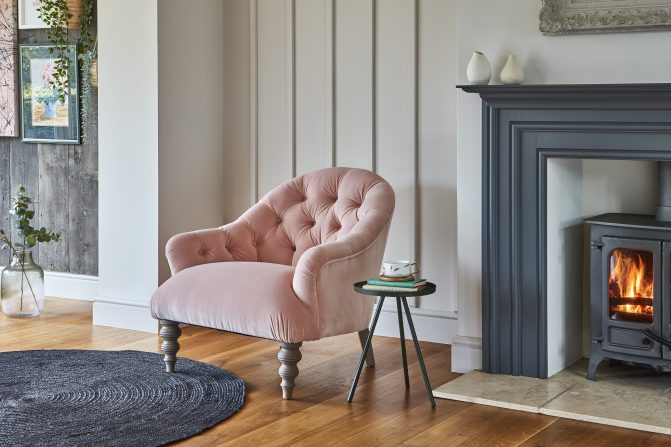
When planning a colour palette for shabby chic room, the focus should be on creating a soft, delicate aesthetic. Pair white with light pastel shades such as beige, powder blues, soft pinks and lavender, which will really help create a stylish contrast with the textures and furniture in your room.
How Do I Make My Room Look Shabby Chic?

The beauty of this style of décor is that it can be applied to any room – shabby chic living rooms and bedrooms tend to be a particularly popular choice. When planning a shabby chic lounge or bedroom, think about the furniture you’d like to use in that space:
- Is it brand new or does it have a vintage/antique feel to it?
- If you are adding new furniture, is there a way you can soften it through accessories?
- If you’re going to introduce a new bed, could that bed have a headboard which creates a shabby chic vibe, through its shape and upholstery?
Texture and colour have a real impact when it comes to creating shabby chic home décor and need to be carefully considered.
Vintage or Antique Furniture?
If you want to create a shabby chic lounge aesthetic, vintage or antique furniture is a great place to start. The distressed but elegant nature of this style of furniture brings a sense of nostalgia and warmth to your space, it’s just a case of working out what will complement your existing furniture.
The difference between vintage and antique is the age of the furniture. Of the two, antique furniture is older, and tends to be at least 100 years old, whereas vintage, while still old, was created more recently. From vintage wardrobes in your bedroom to antique dressers in your living room, the distressed look can bring real character to your space.
Blend Curved Furniture with Some Chalky Hues
Shabby chic décor is all about softness – there aren’t any loud colours or clean lines, and this is why curved furniture complements this aesthetic so beautifully. From curved sofas and chairs to round tables, furniture without any straight edges will look the part in a modern shabby chic living room. Chalky hues can add to the distressed effect, adding wonderful texture to your space – whereas glossy or vibrant textiles or paints can look too polished.
Experiment with other Shabby Chic Colours
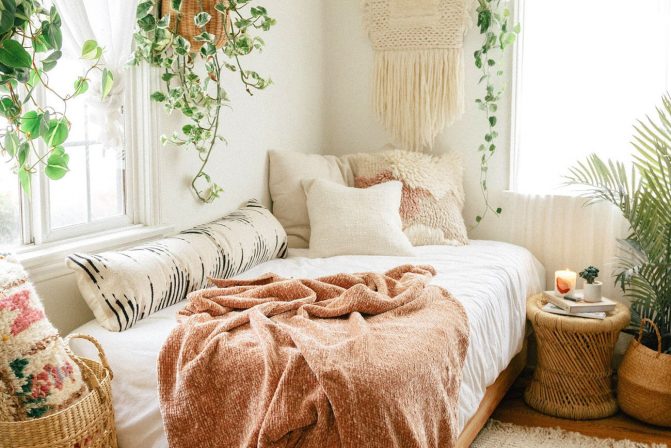
While white can often be the foundation of a shabby chic colour palette, neutrals also have a strong role to play, as do pastel shades. Choose a colour palette that evokes feelings of country cottages, wisteria, walking through woodland or French vineyards and you’ll be heading along the right track!
Whether you are decorating a bedroom or living room, pastels such as blues, yellows, pinks, and greens would all work beautifully, as would neutral shades such as creams, taupe and soft greys. There’s a real opportunity to experiment with colour – the key is for it not to be too bold or too bright.
Soft Furnishings
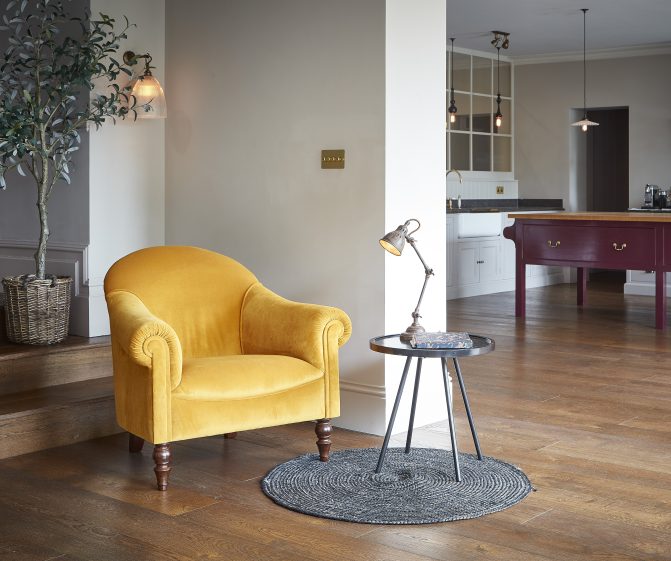
Given the subtle colour palette of a shabby chic interior, adding layers can help to create to ensure your interior doesn’t look too flat or one-dimensional. Soft furnishings are a great way to do that. From floral cushions on your sofa to lace table runners and dusky pink velvet sofas, adding texture and pattern through your shabby chic living room accessories helps to give your space real character. In your bedroom, from your bedding to cushions and your bedroom chair, the same thought process can be applied.
Wooden Furniture
Bringing natural textures and materials into your chic décor will enhance the room’s overall aesthetic, with wooden furniture offering a great opportunity to create a rustic and stylish interior. Wood complements neutral colours and acts as a fantastic contrast to pastels, making it the perfect partner to your shabby chic colour palette – from coffee tables and TV cabinets in your living room to bedside tables and shelving in your bedroom.
Natural Elements

From linen to wood, and fresh flowers to vintage-style leather sofas, natural elements bring character and personality to your space. Similar to a shabby chic colour palette, natural elements aren’t too bold or vibrant, they will add texture and layers to your space, which is a real focal point in shabby chic home décor.
Mix and Match Patterns, Prints and Texture
Introducing a mixture of patterns, prints and textures will bring your shabby chic interior to life and helps to stop it from feeling too flat or two dimensional. In your living room or bedroom, utilise shabby chic accessories such as cushions or your sofa or bed, with the option of including a wool patterned throw. In your dining room, think about your table cover and how its design can contribute to the overall aesthetic. Picture frames, clocks and mirrors in each room can also help to create a wonderfully rich design.
Add Some Cottagecore Style
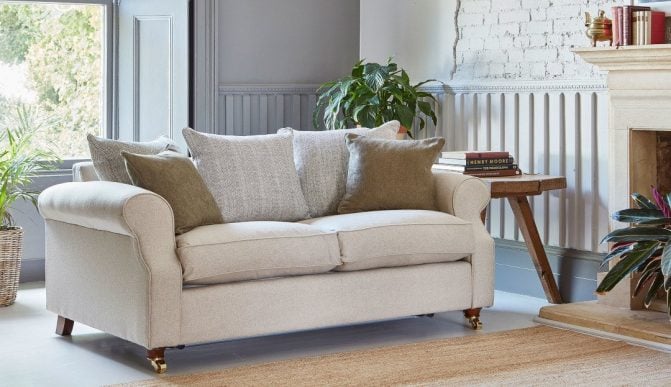
Cottagecore and shabby chic home décor share a lot of the same principles, so adding some cottagecore style to your space will only enhance your interior. Cottagecore focuses on the enjoyment of a simple lifestyle which connects to the outdoors, so the use of natural materials, flowers and floral patterns all tick both boxes, creating a wonderfully inviting space.
Boho Style
While bohemian style and shabby chic style share some similarities, they also contrast in a number of ways, so it’s definitely worth deciding which route you want to take first! Bohemian style is very eclectic and can work beautifully in rooms such as your bedroom or living room. Similar to shabby chic, boho style works in layers and mixes and matches patterns. It also embraces vintage furniture, which again ties into the shabby chic décor ethos.
From velvet headboards to leather sofas and linen chairs, texture, character and mixing and matching your materials will all help to build a boho/shabby chic interior.
Shabby Chic Reading Nook
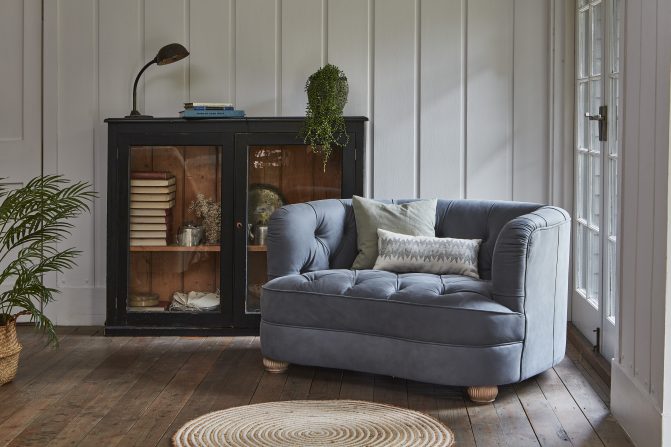
When looking at shabby chic room ideas, if you have space in your living room, bedroom, or office, why not consider a reading nook? The ultimate in cosiness, whether you factor in a window seat or a love seat, think of wooden bookshelves with antique book ends, a beautiful rug and soft lighting, and before long, you’ll have created a space you never want to leave!



